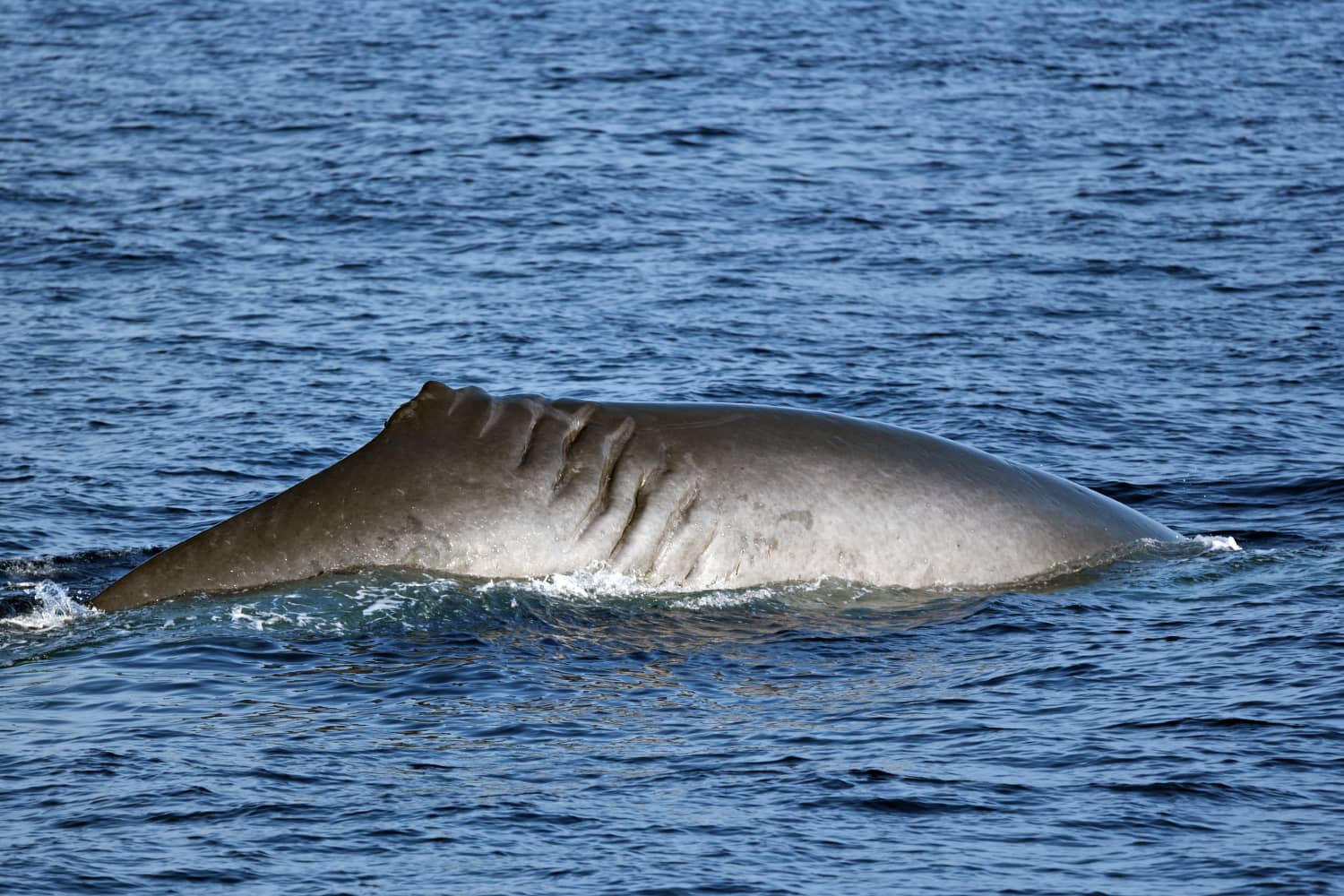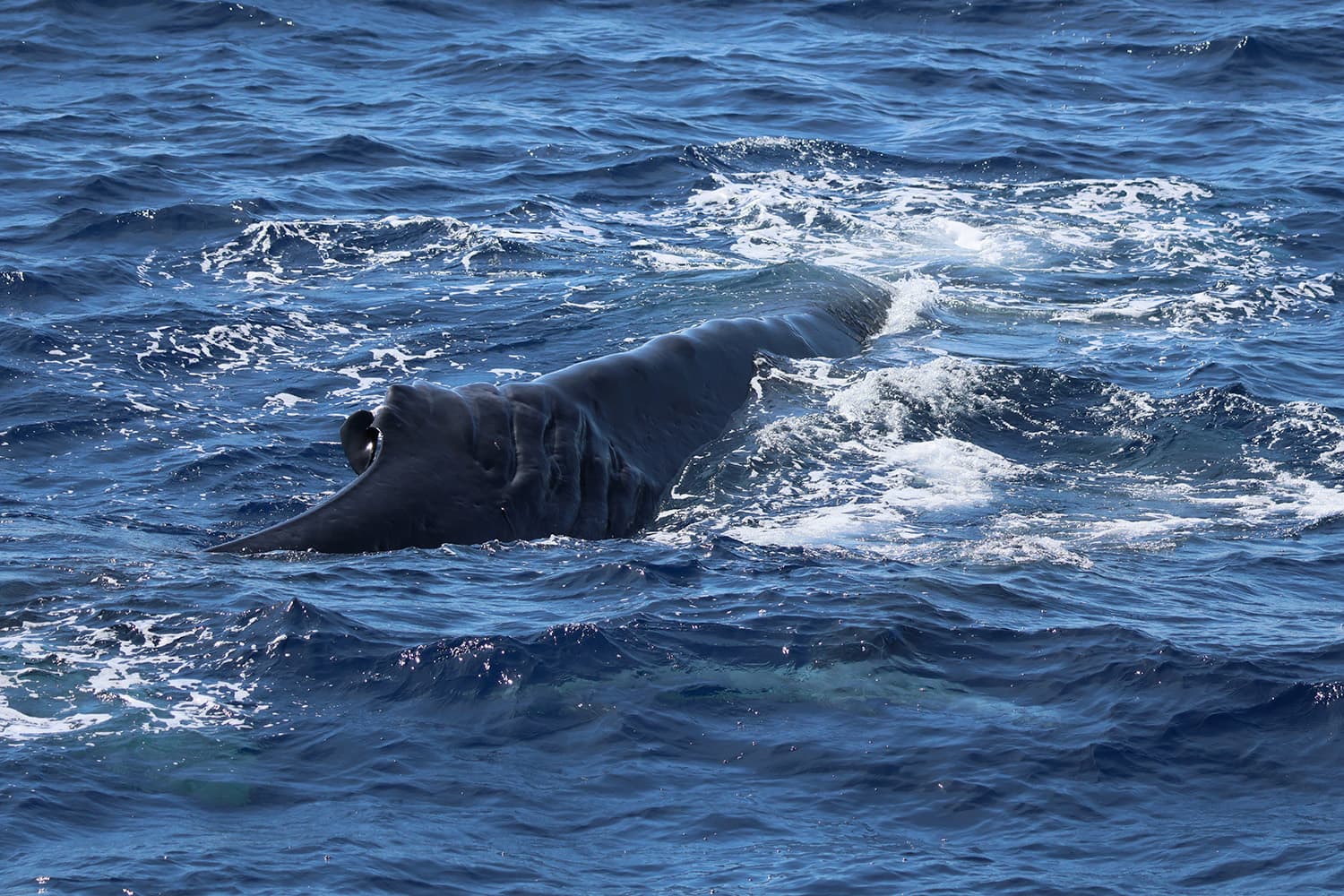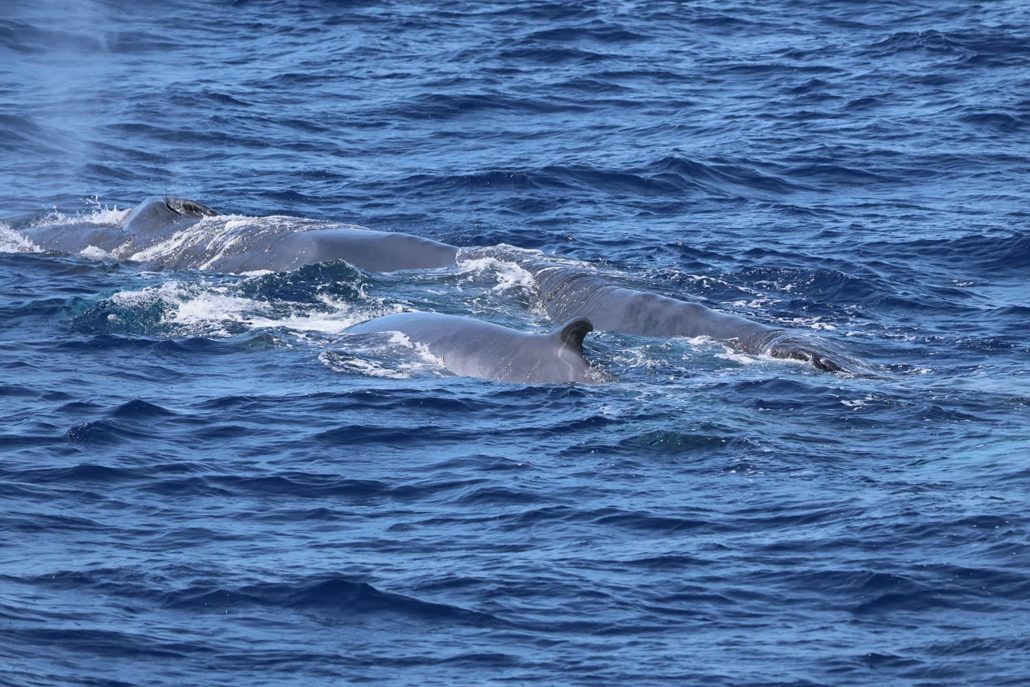‘Propeller’, the fin whale with a deep propeller scar, spotted with a calf
A fin whale accompanied by a calf is an extremely rare occurrence in the north-western Mediterranean. But the sighting made by Golfo Paradiso Whale Watching’s “Corsara” a few days ago was not of just any whale, but rather an unmistakable individual – an old acquaintance of ours, from 1998: it was “Propeller”, recognisable at first glance by the impressive deep parallel scars on its body, indicating that the animal had survived a collision with a boat. We now know that she is a female, and that despite her troubled history, she was able to reproduce.
Fin whales (Balaenoptera physalus) belong to the second largest species that has ever existed on Earth after the blue whale; in the Mediterranean they concentrate in summer in the Pelagos Sanctuary, the large transnational marine protected area between Liguria, France and Sardinia. Here they mainly feed on krill, and are usually only spotted as adults or already weaned juveniles. The presence of calves is an exceptional occurrence, although this year they seem to be more frequent than usual. Since the beginning of the season, six more have been recorded, five of which were spotted by Golfo Paradiso Whale Watching, and one by the association “Delfini del Ponente”.
“In any case, this calf is the youngest fin whale sighted this year,” says Jessica Picozzi, the biologist on board the motor vessel “Corsara”, who witnessed the event, “and it appeared to be in good health. Even the mother, although thin, but no more than others, appeared to be in good condition despite her sad story“.
“Unfortunately this fin whale must have endured great suffering,” says Maddalena Jahoda, researcher at Tethys, the institute that has been monitoring the cetaceans in the Sanctuary for over 30 years, “and with the name we chose, “Propeller”, we wanted to remind people that she was definitely a victim of humans. We had first spotted her in 1998 already with the conspicuous scars between her back and her right side. Then she wasn’t sighted again for a long time, leading to serious fears for her fate”.
In summer 2010 she then reappeared again, and with one more scar: her dorsal fin had collapsed to the side, perhaps a consequence of the first injury or maybe even a second accident. Then, thanks to boaters and the same whale watching operator, more reports of Propeller had arrived, one of them in October in a rather unusual area, at short distance from the coast, in front of the Portofino lighthouse (Genova). Finally, in 2019 Propeller was seen again by Tethys, off the Ligurian coast of “Ponente”, further confirming that despite her deep wounds, she had survived and was in good shape.
“Unfortunately, collisions are one of the main and real threats to the survival of the large marine mammals in our seas,” Sabina Airoldi, head of the Cetacean Sanctuary Research project at the Tethys Research Institute, stresses with concern. “It is estimated that every year dozens of fin whales and sperm whales are victims of collisions in the Sanctuary, numbers that are too high for the small size of the populations in our seas”.
The Sanctuary is located in one of the busiest areas in the Mediterranean and in the world, and forecasts are for a further dramatic increase of maritime traffic along all routes. Not to mention that the risk of collision increases with the constantly increasing speed as well. For years, the Tethys Research Institute has been monitoring the impact of this serious threat on the cetaceans of the Pelagos Sanctuary and, together with other research bodies, supports the Coast Guard in prevention and mitigation activities.
Propeller is a symbol of the resilience of Mediterranean cetaceans, but also of the many hardships that marine mammals in the Mediterranean (and beyond) have to face due to humans. “Because for every animal that is saved,” agree the researchers, “many others have died without anyone being able to witness it.”
M.J.











